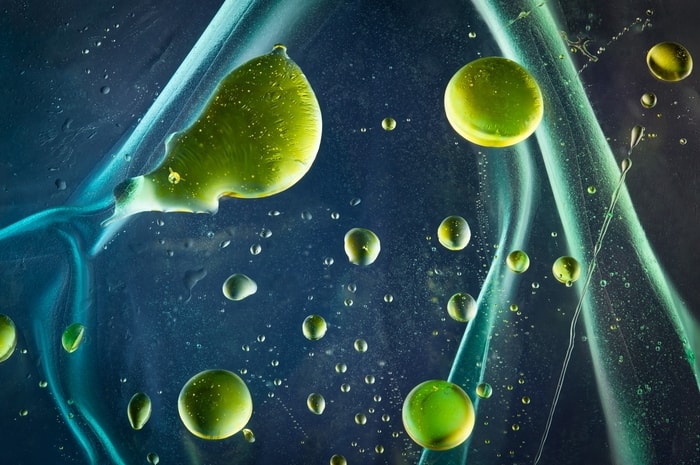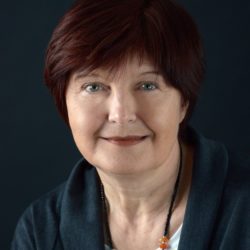Ela Kurowska
Interview with Ela Kurowska
TIFA 2020 Winner, 1st Place, Science category – “Viveria”
Ela started her adventure with the camera about 10 years ago, after a long and successful career in research in the field of biochemistry. Her first passion was travel photography, but she soon discovered that she could combine her new love for capturing the world through the lens with her lifelong interest in science and experimenting. In 2013, she came across an experimental technique used in the past by engineers to visualize mechanical stresses in objects made of transparent resins by subjecting them to deformation and then capturing them in the cross-polarized light.
Q: Tell us a bit about your background?
The images of stressed resin models were bursting with light and vivid colors and I thought that I could implement this phenomenon, called photoelasticity, in my art photography. The project became a reality after I found a perfect photoelastic material that I could use instead of hard, unyielding resins – organic gels. Organic gels are soft, malleable, easy to mold and sculpture into biomorphic shapes.
They are ideally transparent but can also be tinted with colors. Most importantly, they produce a spectacular glow when deformed and captured in the cross-polarized light. Over the subsequent years I spent countless hours experimenting and tinkering with various organic gels and learning how to capture their spectacular beauty invisible to the naked eye. The images awarded in this competition are part of the large collection called Light Forms.
Q: What themes guide your work and process?
In my artwork, I explore the theme that always fascinated me as a scientist: the origins of life. I attempt to mimic and visualize the potential of amorphous organic matter to self-organize and transform into images of otherworldly life made of light and vivid colors.
My creative process is a combination of science and photography. As a scientist, I design and build small (1.5–2 inches in diameter) structures from translucent photoelastic gels, using my expertise from biochemistry lab, and I manipulate them to develop internal tensions in the gel material. Then, as a photographer, I stage and compose my objects, adjusting their illumination in the cross-polarized light to capture them in their full glory. Creating my tiny gel sculptures is a collaboration with forces of nature and I am driven by curiosity to see the final image.
What is your photographic training, and what equipment do you use?
I have always enjoyed learning things by myself. So, I have never taken any formal photography courses. I just jumped into the field, first by reading books about technical and artistic aspects of taking photos, and then by practicing with the camera. When I started to work with photoelastic gels I quickly realized that I need to develop a separate set of photography skills to capture their ephemeral beauty.
I usually illuminate my gel compositions from behind and/or below, using two large perpendicular LED screens covered with sheet polarizers. To capture gel objects from a close distance, I manipulate them while looking through the camera with a polarizer filter, so my choice of gear is Nikon D750 with 60 mm lens. The camera is connected to a computer with focus stacking software. I use Adobe Lightroom and Photoshop for all my postproduction.
Q: In your free time, what kind of pictures do you like to shoot, and which ones do you avoid?
In my free time, I shoot for instant gratification. So, I avoid heavy gear and anything that requires a great deal of patience. I love travel photography, because when I travel, I become a more conscious observer and I am focused on following the light and on capturing decisive moments happening around me. For the past year, being either at home or nearby, I challenged myself to take at least one photo a day. I have managed to capture many abstract shots inside and around my house and lots of candid pictures of my close family.
Q: What drew you to your particular field of photography?
Shortly after I started my adventure with digital camera, I realized that I am really attracted to experimental photography and photoelastic gels gave me endless possibilities for experimentation. Creating and shooting gel compositions feels like creating and capturing new, unknown forms of life. Viewing my tiny gel objects for the first time in the cross-polarized light is always thrilling. And the moment when I catch them in the perfect light is truly magical.
Q: What kind of photography do you identify with?
It is impossible to put my photography into a single category. I would say it is a combination of science, macro, and abstract photography but I usually think about my images as color abstractions. The glowing, biomorphic structures emerging from dark space seem to have recognizable attributes of life, its gracefulness, beauty, and vitality. At the same time, they appear vaguely alien, like life forms developed in the remote corner of the Universe. As the scale of the objects is not apparent to the viewer – they could be microscopic or cosmic – they seem to depict the awe-inspiring, universal vitality of life.
Q: What is your next big project? Do you have anything exciting in the pipeline?
I am always looking for new ideas and techniques that I could implement in the process of creation of my images. I am eager to experiment with new combinations of gels and other transparent materials, pushing the physical limitations of organic matter and of light itself. After the COVID pause, I will be returning to real life exhibitions, and I have lined up a few art galleries interested in presenting my artwork. In the meantime, I will be participating in several virtual shows, with the next one planned in Toronto.

